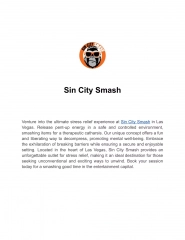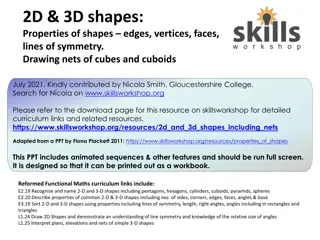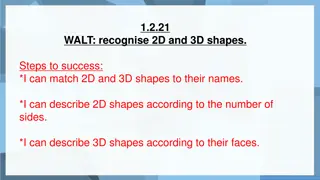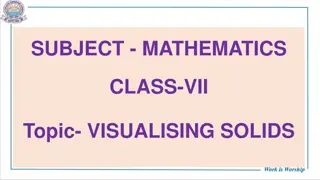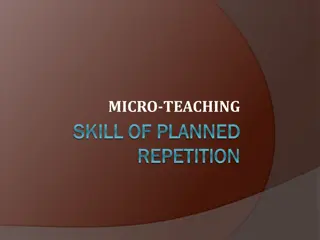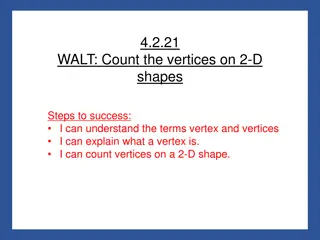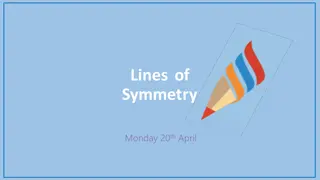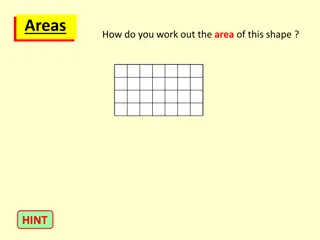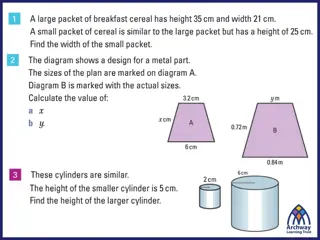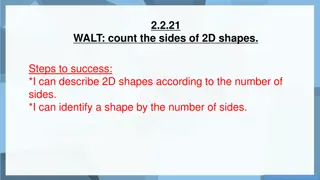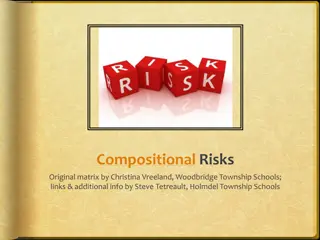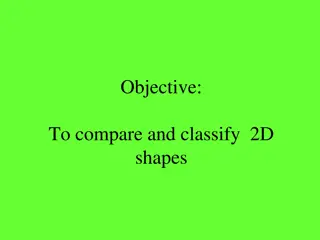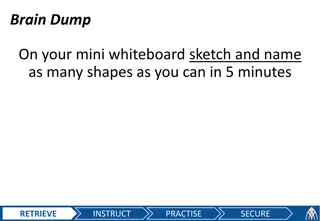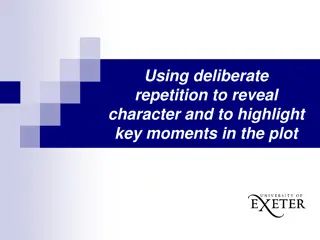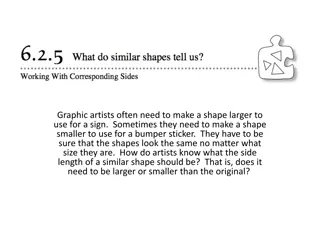Breaking Down Repetition in Shapes
In Lesson 5, students will learn the concept of breaking down tasks into smaller parts through repetition in shapes. The lesson covers identifying chunks of actions, using procedures in programming, and understanding the repetitive nature of procedures in computer programs. Activities include decomposing tasks like getting ready for PE and creating procedures for geometric shapes. Students will develop problem-solving skills and computational thinking through hands-on exercises.
Download Presentation

Please find below an Image/Link to download the presentation.
The content on the website is provided AS IS for your information and personal use only. It may not be sold, licensed, or shared on other websites without obtaining consent from the author.If you encounter any issues during the download, it is possible that the publisher has removed the file from their server.
You are allowed to download the files provided on this website for personal or commercial use, subject to the condition that they are used lawfully. All files are the property of their respective owners.
The content on the website is provided AS IS for your information and personal use only. It may not be sold, licensed, or shared on other websites without obtaining consent from the author.
E N D
Presentation Transcript
Save a copy Lesson 5: Breaking things down Repetition in shapes
Objectives Lesson 5: Breaking things down To decompose a program into parts I can identify chunks of actions in the real world I can use a procedure in a program I can explain that a computer can repeatedly call a procedure 2
Introduction Rearrange the commands to make code for a hexagon [ ] repeat 6 fd 100 60 rt repeat 6 [fd 100 rt 60] 3
Activity 1 Getting ready for PE The task of getting ready for PE has lots of different parts, eg going to get PE kit, taking off shoes, etc. Can you decompose the action of getting ready for PE by breaking it into smaller parts? 4
Activity 1 Getting ready for PE decomposed 1. 2. Come back to your desk 3. Take off uniform 4. Put uniform on chair 5. Put on top 6. Put on shorts 7. Put on trainers 8. Sit on the carpet Get PE bag from peg 5
Activity 1 Decomposing everyday tasks Choose one of the tasks below and decompose it by breaking it into smaller parts. Work with a partner, and write the parts on your whiteboard. Getting ready for school Washing your hands Getting dressed Getting ready for bed Making a sandwich 6
Activity 1 Decomposition in programming When we think about what we need to program, we can also decompose our task into smaller parts. For example, when planning how to draw a hexagon, we can break it down into these parts: 1. 2. Go forward 100 3. Turn right 60 degrees 4. Repeat steps 2 and 3 six times Clear the screen repeat 6 [fd 100 rt 60] 7
Activity 2 Creating procedures A procedure is a named code snippet that can be run multiple times. Creating a procedure will mean that we will save time later on, as we will run the whole code snippet by just typing the one word that we used as a procedure name. 8
Activity 2 Creating a procedure for a square 9
Activity 2 Creating procedures To write a procedure for a square: TO square repeat 4 [fd 100 rt 90] END 10
Activity 2 Creating procedures To write a procedure for a triangle: TO triangle repeat 3 [fd 100 rt 120] END 11
Activity 2 Creating procedures Write procedures for two or three shapes, giving them appropriate names, eg: square triangle pentagon hexagon rectangle Test each procedure after you have created it, to check that it works. 12
Activity 3 Using procedures to make patterns 13
Activity 3 Using procedures to make patterns Task: 1. Plan to use one (or more) of your procedures within a pattern 2. Write down the code that you will use 3. Predict what will be drawn 4. Run the code in Logo 5. Add a screenshot of your work 6. Reflect on the outcome 7. Save your document 14
Plenary Breaking things down This procedure is called cat . TO cat REPEAT 4 [FD 100 RT 90] END Discuss with a partner: What does it draw when we call it? Does it matter to the computer what it is called? Does the computer follow the commands programmed, no matter what the procedure is called? 15
Assessment How confident are you? (1 3) I can identify chunks of actions in the real world I can use a procedure in a program I can explain that a computer can repeatedly call a procedure 3 Very confident 2 Unsure 1 Not confident 16
Summary Next lesson In this lesson, you Next lesson, you will Decomposed real-life activities and code snippets into smaller parts Design, create, and debug a program that uses count-controlled loops Created procedures for shapes Used your procedures to create patterns 17


